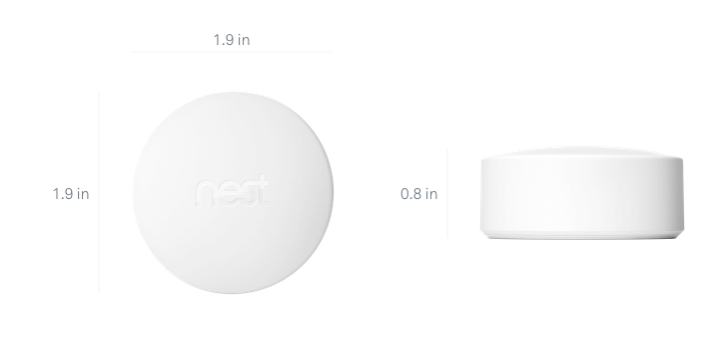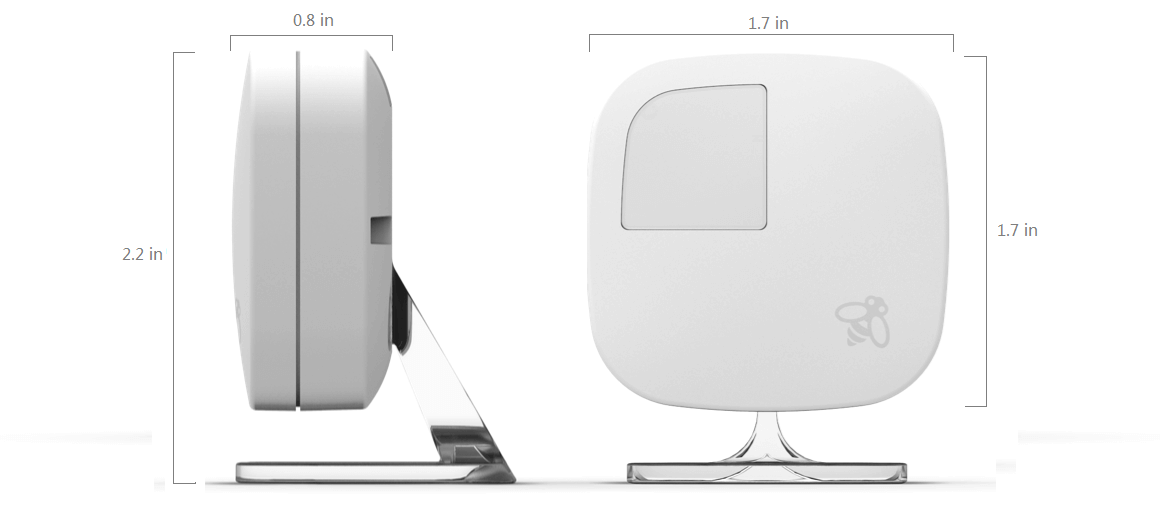While choosing a smart thermostat is a tough job, considering the accessories like room sensor or so call temperature sensor may be even harder. You donât always think about extra expenses when choosing the equipment. However, itâs vital to understand how much more you may need to spend once the installation is done.
Both Ecobee and Nest thermostats are wonderful choices for most American homeowners. Today, they both come with sensors that can make the temperatures comfortable in every room. However, these sensors need to be purchased separately. Which one of them is better? Letâs take a look.
 Nest Temperature Sensor vs Ecobee Room Sensor: What Do They Do?
 |
 |
 |
Both these sensors do the same job. In many homes, people suffer from temperature differences in various rooms. These sensors are placed in each room you may have a problem with. They measure the temperature in a certain room and send the information to the thermostat to adjust heating or cooling. For Nest and older Ecobee models, these sensors need to be purchased separately. However, the Ecobee4 model has one sensor included.
Design
Since you may need to place these sensors somewhere, where they are highly visible, their design matters. As expected, both Ecobee and Nest did a great job with the design. Both sensors are white. They copy the shape of the thermostat controllers. I.e. Ecobee sensor is a rounded rectangle while Nest is round. Both sensors fit perfectly into any roomâs decor.
Each of the sensors works solely with the thermostat they are made for. You canât interchange Nest and Ecobee sensors. However, you can use Ecobee4 sensors for older Ecobee models with some adjustments
 

The sensors are very similar. They have different shap, Nest sensor come with round, but Ecobee sensor is in square.Beside that they have almost the same size and communication range:
- Ecobee â?45 feet
- Nest â?50 feet
However, they have different connection capabilities
- Ecobee â?connects to the thermostat via Bluetooth Low Energy
- Nest â?connect using low-power radio frequency (915 MHz)
Nest can work with up to six temperature sensors. Meanwhile, Ecobee can connect up to a whopping 32 sensors!
Both Nest and Ecobee temperature sensors can either be placed on the surface or attached to the wall. Ecobee comes with a delicate plastic stand for better aesthetic appeal.
Features
Ecobee sensors have been on the market a little longer and they seem to have more interesting features than Nest sensors. For example, Ecobee room sensor has motion detection ability, which is part of its Follow Me mode.
Ecobee keeps track of which rooms in the house are occupied and then uses the average temperatures you ask for in these rooms to create an optimal and energy-efficient temperature setting. Each Ecobee sensor has a proximity detector ability. Meanwhile, Nest sensors are not connected to the Home/Away Assist feature.
Once you leave the room and Ecobee sensors donât detect your motion anymore, the temperature is adjusted accordingly for energy saving purposes. The readings from the sensors located in unoccupied rooms are not considered when calculating the temperature average for the house.
Follow Me is an optional feature, which you can disable at any time.
Both Ecobee and Nest sensors create a multi-zone system in your house, allowing you to save energy while maintaining a comfortable temperature in each room.
Each temperature sensor can be scheduled to produce a certain temperature whenever needed. If you need the nursery to be warmer during the night or the kitchen to be colder in the evening, the sensor scheduling can help you do just that.
Installation
Both Ecobee and Nest sensors are easy to install. Each one of them can be either placed on a flat surface or mounted to the wall. Ecobee has a plastic stand, which mostly adds to the aesthetic appeal rather than to the installation simplicity. The stand is optional.
[/et_pb_text][/et_pb_column][/et_pb_row][et_pb_row custom_padding=”0px|0px|0px|0px” _builder_version=”3.0.101″][et_pb_column type=”1_2″ _builder_version=”3.0.101″ parallax=”off” parallax_method=”on”][et_pb_image src=”https://homeautotechs.com/wp-content/uploads/2018/04/4.png” _builder_version=”3.0.101″][/et_pb_image][/et_pb_column][et_pb_column type=”1_2″ _builder_version=”3.0.101″ parallax=”off” parallax_method=”on”][et_pb_text admin_label=”Text” _builder_version=”3.0.101″]Â Nest sensor comes with a mounting screw and an installation card in the box. Installation is straightforward. Upon installation completion, you should use the Nest app to link the sensor to the thermostat.
[/et_pb_text][/et_pb_column][/et_pb_row][et_pb_row custom_padding=”27px|0px|13px|0px” _builder_version=”3.0.101″][et_pb_column type=”1_2″ _builder_version=”3.0.101″ parallax=”off” parallax_method=”on”][et_pb_text _builder_version=”3.0.101″]There are three ways to install the Ecobee sensor:
- Fix it with the screw, which comes in a box
- Use the adhesive that comes in a box
- Use a plastic stand
The Ecobee sensor has a plastic tab inserted. As soon as the sensor installation is completed, you pull the plastic tab, and the sensor automatically connects to the thermostat.
[/et_pb_text][/et_pb_column][et_pb_column type=”1_2″ _builder_version=”3.0.101″ parallax=”off” parallax_method=”on”][et_pb_image src=”https://homeautotechs.com/wp-content/uploads/2018/04/ecobee2.jpg” _builder_version=”3.0.101″][/et_pb_image][/et_pb_column][/et_pb_row][et_pb_row custom_padding=”27px|0px|0px|0px” _builder_version=”3.0.101″][et_pb_column type=”4_4″ _builder_version=”3.0.101″ parallax=”off” parallax_method=”on”][et_pb_text admin_label=”Text” _builder_version=”3.0.101″]The most popular places to install both sensors are:
- Nursery â?to make sure the room temperature is ideal for the baby
- Bedroom â?keeps the temperatures comfortable while you sleep
- Extra-large room â?large rooms cool and heat slowly due to their size. The sensor can make sure you donât feel uncomfortable while waiting for the temperatures to adjust.
- Rarely used spaces (attic) â?you can use the sensor to monitor the temperatures in these rooms to improve energy efficiency.
Both Ecobee and Nest sensors are powered up by batteries, which last for about two years.
- Nest â?CR2 3V lithium battery
- Ecobee â?CR2032
Compatibility
As we mentioned before, Ecobee and Nest sensors are not interchangeable. I.e. your Ecobee room sensor wonât work with the Nest thermostat.
- Nest temperature sensor works with Nest Learning 3rd Gen Thermostat and Nest Thermostat E.
- Ecobee room sensor is compatible with Ecobee3, Ecobee3 Lite, and Ecobee4.
Both sensors easily connect to their respective thermostats and do their job without mishaps.
Final Thoughts
Before April 2018, Ecobee stressed the availability of its room sensors when describing the advantages over Nest. However, Nest released its own sensors to compete with Ecobee. Currently, the biggest difference between the two is the motion detection feature, which Nest lacks.
Overall, the presence or lack of sensors is not the reason to choose one thermostat over another anymore. You can consider doing the following:
Choose Nest if
- You already have Nest Learning 3rd Generation or Nest Thermostat E
- Your house has more than one divided HVAC (for example, one upstairs and one downstairs), and you donât need âFollow meâ?mode.
- You use Wi-Fi 5 GHz in the house and donât want to switch to 2.4 GHz.
Choose Ecobee if
- You already have Ecobee3/Ecobee3 Lite or Ecobee4
- Your house has many rooms, and you use âFollow meâ?mode
- You have a central HVAC system.